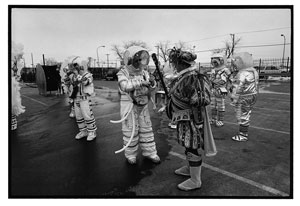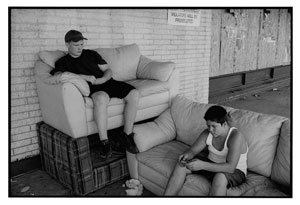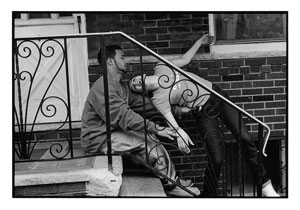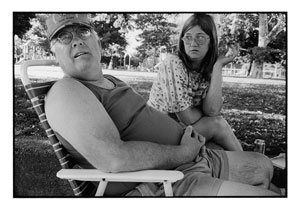 |
Nuts & Bolts
February 2004
|
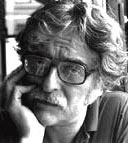 |
|||||||||||||||||||
|
Anybody who reads this column knows I love photo books. Books last longer than tear sheets and reach more people than exhibits. I'm lucky that a lot of friends and associates have done books. A great many of the books on my shelves are reminders of some good people. One of them is Jonathan Elderfield. I worked with him at one of the early Eddie Adams Workshops. I thought it would be interesting to people just starting out in professional photography to hear the story of how he went about getting a book published when he was in the same situation. (By the way, it's a good book.) These are his words. I attended The Eddie Adams Workshop in 1992 while I was working as a photo researcher at Black Star. It was a good entry-level job in the industry fulfilling picture requests from magazine and book publishers. I got to look at a lot of work by some great photographers: Chris Morris, Anthony Suau, the Turnley brothers, Lynn Johnson, Joe Rodriguez, and many others. I also to got to talk to some of them about shooting which was great most of them were very open about giving advice and ideas. In 1993 I shot a project in B&W on New York Youth at Risk an early attempt to produce a documentary photo essay. It wasnt published in essay form and was very hard and challenging work for me but I learned a lot from it: How to spend a lot of time with the subjects and how to work a situation to make a variety of different looking pictures.
I think what is interesting about this point in my career is that shooting is what I had been trying to do for 7 years since college and starting at Black Star in 1990. While I enjoyed much of the work I think I also started to lose interest in it. Doing politics was very interesting I covered New Hampshire last time around with the republicans, mostly McCain and Bush. But I also started doing a lot of celebrity work including movie premieres and parties. And this is where most of my sales came from. But I didnt have time to pursue the long-term documentary work that I was most interested in. Also the hustling and trying to get assignments from magazines like Time and Newsweek was very hard. A few came in but not too many.
During 2000 I covered the Republican convention in Philadelphia and I think did a really strong job working now with Gamma Presse as GammaLision had split apart due to Liaison being purchased by Getty. I realized while shooting the convention how hard it was to compete with the wires and newspapers. Obviously I was working a different market - magazines and Europe and working on spec, not on assignment - but seeing the wires and newspapers with so many shooters was disheartening. Also I was shooting film and everyone was now going digital. I decided to try to get a full time shooting job for a paper in the US. So I sent a bunch of resumes around to papers across the country. Mike Smith at The New York Times called me for an interview not as a shooter but for freelance picture editing. I had seen while I was working at the agencies how hard it was to make the switch from agency editor to magazine or newspaper editor so getting work at a top paper seemed hard to ignore. My wife and I were also planning to start a family and liked the idea of the regular income. So in the fall of 2000 I started work as a picture editor on a freelance basis for The New York Times.
I chose South Philly for a few reasons. I had some friends who lived in center city Philadelphia and I could stay with them anytime they also had introduced me to South Phillys Italian Market which I found to be a strange weird place that felt like turn of the century pictures I had seen. I am a fan of Italian food and espresso also, so that made it a draw for me too. I got to know the area a bit from when I had been shooting the Republican convention. I liked the small narrow streets where people hang out and really live outside. One of the main reasons was that I was attracted to shooting there was that it wasnt in New York then my home. I knew things at home would distract me and that in Philly (only 2 hours away) I wouldnt be distracted. I felt almost as if I had traveled abroad. I was also fascinated by the Mummers parade Phillys New Years parade that features strangely costumed string bands performing dance numbers as well as other assorted weirdness. Many of these groups were based in South Philly.
I think I was feeling that I wasnt emotionally ready to enter peoples lives in the way you need to make the kind of documentary photo essay that I had previously attempted. While the street pictures were by no means easy they were easier on the emotions than spending so much time getting really involved with small groups. So I cruised the streets and asked people to shoot or just shot from the hip. The work was at times very grueling. Some days Id spend 8 or 10 hours walking around and shoot only a few frames. Id get very frustrated and down on myself feeling very low self esteem. Other days would seem magical in the space of an hour or two, I could have 5 or 10 rolls and many strong images. I think the good pictures resulted more often from my mood than what I actually found out in the world.
As I got to know South Philly I found good corners or blocks that often had good scenes. My one rule was that anything I shot in the neighborhood would be my story of South Philly but I tried not to cover the area in the traditional form of a photo essay. I wanted to achieve a kind of looseness with the images that I felt I often dont have in my shooting. I also took a class at ICP with Ellen Binder when I started the project and she was a good guide during the early parts of the work. So the shooting took a bit less than 18 months I think about 250 rolls of TriX and TMZ 3200. I had all the processing done at MV lab in NYC and they printed the 8x10 work prints and 11x14 final prints.
I did a lot of research on the art/photo publishers who would be there. I made a few appointments and also cruised the booths for interesting publishers. I ended up with two offers to work with me and one seemed to be a good fit. Kehrer Verlag, based in Heidelberg turned out to be great. About 11 months after Frankfurt (including time for contract negotiations with Kehrer and the authors) I went to Heidelberg to produce the book. They scanned the 11x14 prints and then over 10 days I worked with a designer and image specialist doing the design and printing. I was involved in all aspects of the book production from layout, type style, to going on press. The designer and publisher assisted me with the final image selection That leaves us in the present. I am about a month into a new job as an assistant picture editor at The Chicago Tribune. I plan to start doing some work on a B&W project in Chicago starting later this year. Jonathan Elderfield February 2004 LIVING UNDER SOUTH STREET by JONATHAN ELDERFIELD has just been published, with 54 duotone illustrations and text by Murray Dubin and W. S. Di Piero is published by Kehrer Heidelberg and is distributed in the US by www.cbsd.com. For more information see my website, www.jefoto.com.
© Bill Pierce
Contributing Writer
|
||||||||||||||||||||
|
Write a Letter to the Editor
Join our Mailing List
© The Digital Journalist
|
